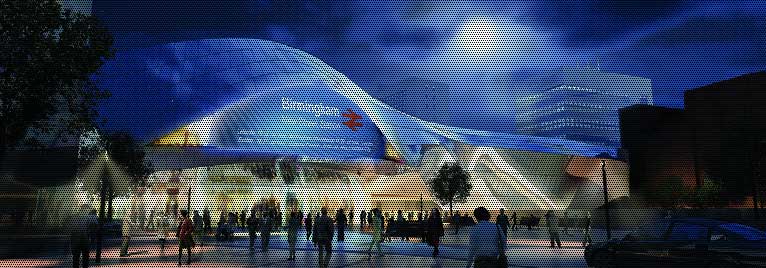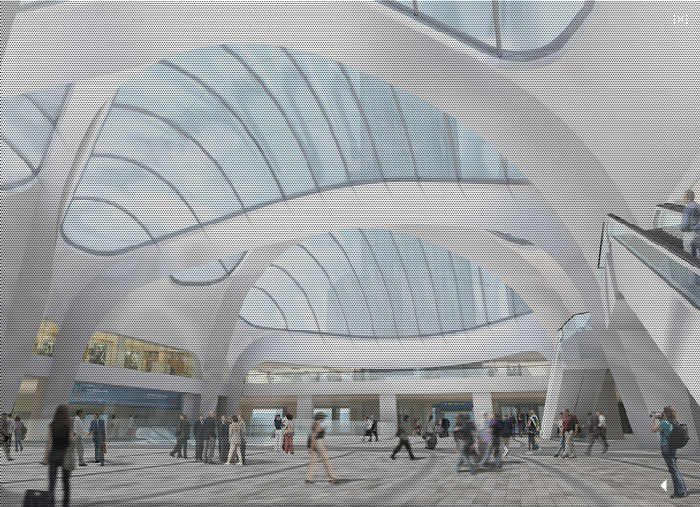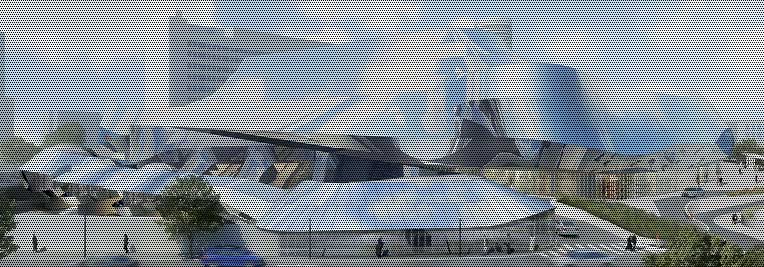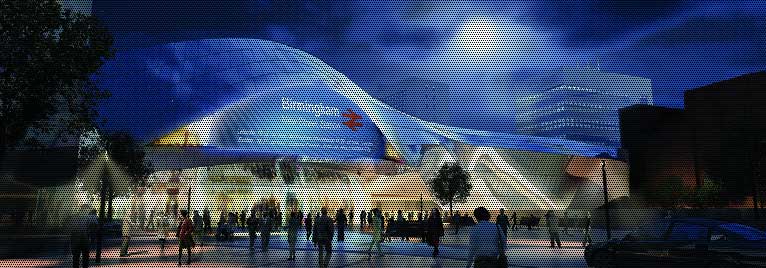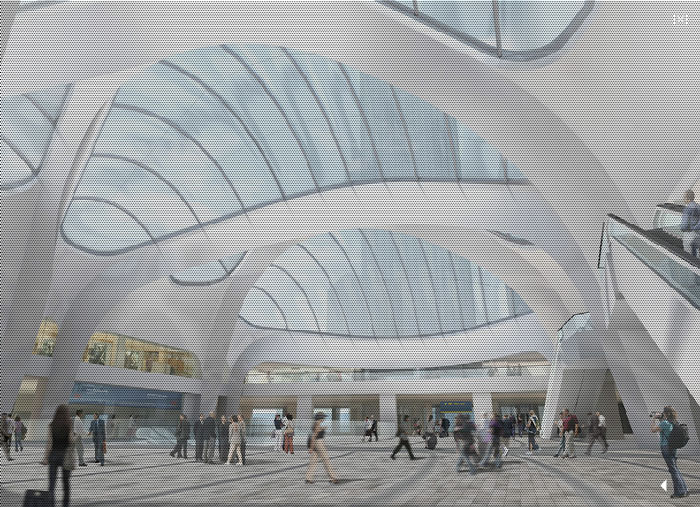Birmingham New Street Station
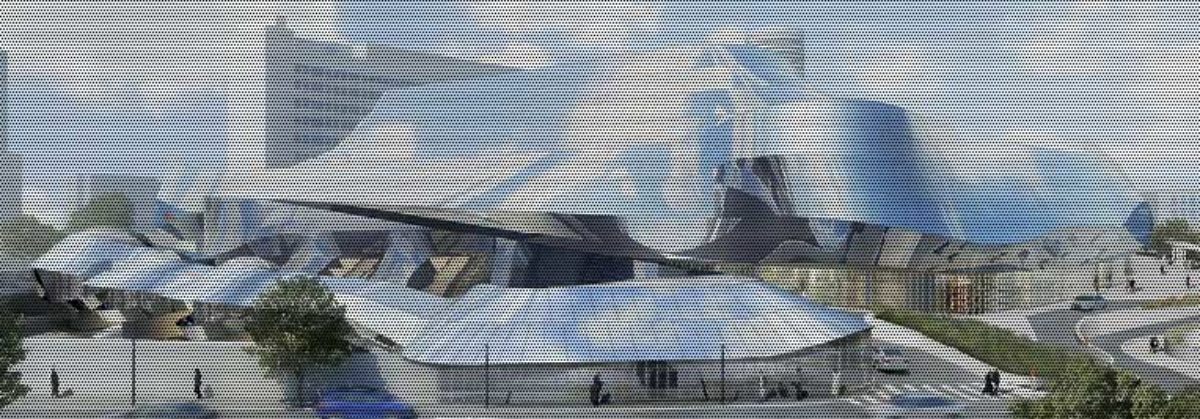
Birmingham New Street Station is an important transport hub and a key aspect of the city’s public realm. Occupying an important position in the city and handling a large amount of traffic, it provides the first impression of Birmingham to a large influx of visitors to the Midlands. FOA’s proposal for the station seeks to produce iconic architecture that, beyond creating an impression, is able to communicate the function of the building to the public. To achieve this, the station is designed to give expression to the dynamic nature of the railway. The rail engine, the bifurcating patterns of the rails, or the distortion of perception produced by movement have been the inspiration for the architectural expression of the project. The undulating, smooth forms of the track field have been transferred and embedded into the geometry of the building to embellish the city and to convey its historical character as a transportation hub where various traffic systems such as the famous canals, the roman roads, etc, converge and overlay. Our design aims to trigger a new perception of the urban settings around the station. The station cladding will be a stainless steel skin which conceals the future plant areas on the room and wraps around the existing car park. As the cladding cannot be related to the interior of the building for practical reasons, the design of the façade is related to the exterior space, making the building an instrument to intensify the perception of urban life in Birmingham’s inner city. By turning the external rain screen into a warping, reflective stainless steel surface, Birmingham New Street Station will produce a controlled reflection of the surrounding urban field—the once dark, now bright, Birmingham sky, the crowds of passengers, the trains entering and exiting the station, the hues of sunset and sunrise and other dynamic regimes present at the site. To highlight the four main access points, large eye-shaped media screens to broadcast railway information, news and commercials have been integrated in the façade. The field of reflections which constitutes the external envelope of the building, and produces a consistent identity, differentiates depending on the opportunities on each side of the building.
Team: Alejandro Zaera-Polo, Lola Fernandez, Sukyeong Kim, Carmen Sagredo, Takeru Sato, Penny Sperbund, Christof Trenner, Adams Dara Taylor, Hoare Lee
Birmingham, UK
